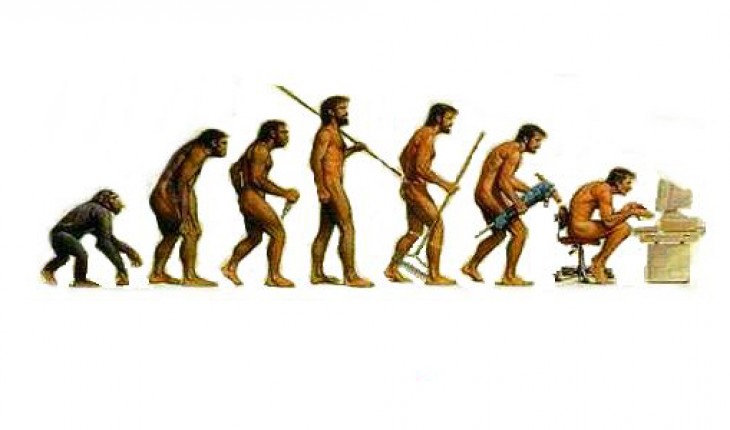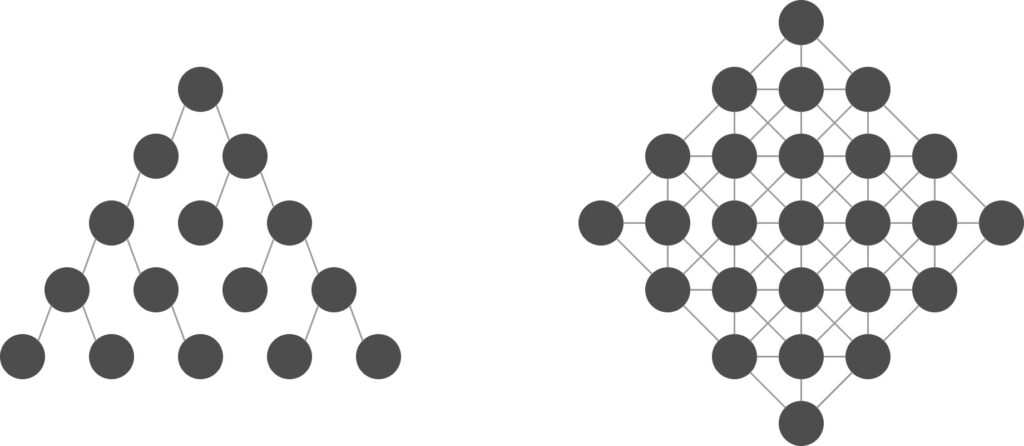The history of Mankind is a history of communities, from how we transformed from hunter-gatherers to start domesticating Nature, from the creation of agricultural surpluses to the creation of cities, the specialization of labor to the information age of the digital economy. The (r)evolutions of recent centuries have also led to the transformation of our institutions, progressively making them more horizontal. This leveling of the ground for everyone led to the abolishment of several hierarchical structures, replaced by the power of networks, a story so well-told by Niall Fergusson’s “The Square And The Tower”. This is also the story of the internet.

And, as all of us reading this article agree, we are starting to write a new chapter on this story, a chapter where networks do not serve only to absorb information, nor only to share, but also own the networks. This value-sharing principle is at the core basis of Web3 and its products.
Rethinking Communities with Web3 Lenses
As this new chapter unfolds, we are being called to rethink our communities. To think about how the value generated by these networks of individuals can be spread not vertically, in the traditional corporate sense, but also horizontally, among the users that are indeed generating it by their use of the networks. And it’s been done with quite success, despite its highs and bumps. See what has been achieved by the sharing of money (or stores of value, pick your favorite narrative), as best illustrated by Bitcoin. Or by programmable value with Ethereum and the alternative blockchains. But we’ve all been struggling to find the use cases to reach the wide masses, “the next billion users”, as is so often called.

While many of us are distracted with the new cultural and economical primitives we’ve been so excited developing, from memecoins to PFPs and other NFTs, we might just be missing the boring use cases just in front of us. I mean, most of the crypto community has yawned at initiatives such as Starbucks Odyssey, an experiment that gamifies the Starbucks’ clients experience on the blockchain, harnessing attention only among the narrative that “the institutions are coming”…

Reality is we are all used to loyalty points. And, if you think about it, it’s a system where blockchain makes perfect sense. Typically, this marketing strategy aims at customer retention, where repeat customers earn points based on their purchases, and these points can be redeemed for rewards. Loyalty points have been a must-have in the last decades, from retail to hospitality, airlines and credit card companies. But these points typically work in closed-systems, where they cannot be redeemed out of the company’s offering, much less traded. In some sense, the customer has earned those points, but they in fact belong to the company or brand that attributed them, so their terms can change at will.
Web3 breaks this logic. Suddenly, we have mechanisms for the points to belong to the user, not the company, and to be distributed in a trustless and verifiable manner. But we’re yet to see a massive movement towards interoperable loyalty points. This is because the previous experiences with this kind of solution have failed to build significant traction. After all, what is the real value of the company to attribute a discount to a customer that has earned the right for that discount by repeated acquisitions with another company? There are reasonable arguments for companies to distrust such a system.
Shared Interests: The Basis of Communities
But what if the loyalty points system is not built by companies, but by the customers themselves? For Web3, the community is as fundamental to the success of the project as the technology: you simply cannot build a valuable product without a group of people around you that agree on that value proposition. But the theme cementing the community does not mean to be the value itself. The network can be built around any shared interest or a specific topic that harnesses the attention of its members, leveraging blockchain technology for this shared experience to be gamified and for value to be brought and shared among the network.

And these shared interests can be anything. We’re seeing this increasing among music, among fans and their relation with their favorite artists, and even sport fans. Now extend this a bit further… to any hobby you enjoy and can now monetize. This is a powerful idea precisely because the experiences we can endure throughout our lifetime are scarce. And Web3 provides the grounds for us to build a digital representation of those very experiences through a shared system that unites those participating, thus providing meaning, and value. This is, in some sense, a generalization from the idea behind POAPs and other NFTs based on physical-world human experiences.
Now, think of physical activity. Everyone has some sense of the finitude of their body, and of the importance of keeping in shape to improve our health. This has opened immensely valuable markets in the traditional economy. But how has this translated into Web3?
The Case of Sweat Economy
While we had a small hype of the “Move-to-Earn” movement, particularly focused on blockchain gaming and NFTs, it never really did go far, did it? Well, perhaps it’s time to think again. Look for a moment at Sweat Economy. It is a project that introduces a sense of scarcity to the “reward points” typically earned through fitness apps, transforming them into a form of currency through the use of blockchain technology. From a common passion, fitness, walking and running, they’ve built an audience with gamification (the reward being the token that can be exchanged for other rewards).

Given the engaged audience in a specific niche, there’s a significant appeal for external brands to engage with the Sweat Economy to market their products and services – and the most basic level is by offering their products and services as rewards to be distributed among Sweat Economy users. And, instead of other “Move-to-Earn” (or, for this end, any “Anything-to-Earn” variation) projects, there are no barriers to entry, meaning no need to acquire expensive NFTs to participate – all one has to do is download an app, sign-in, and their steps start generating tokens.
A Recipe for New Projects
So what seem to be the ingredients for a successful recipe here? First of all, identify your theme: you need a pre-existing community to bootstrap your product. From that theme or shared interest, then it’s time to start BUIDLing. Gamification here is key. Your product needs to have minimal barriers to entry, for the adoption to be seamless from the people that are already there, around the same theme you are exploring. And it should be fun and engaging, with the rooting in a social shared experience that provides additional meaning to the user (the rooting in a community). Here also comes the rewards (the token), that by principal do not need an explicit economic value at beginning. Value will come later on.
Because loyalty points are a valuable marketing tool for companies, your community and the attention it grabs from its members will also bear value to others. And there’s no reason to be afraid to monetize on that. You just need to do it in a transparent and ethical way, that respects the users’ data and gives value back to them, without just extracting value out of them.
By uniting these elements we’ve come up with a virtuous cycle for a community to flourish. There’s an audience, a common passion, gamification to further enhance user retention. And we avoid a common pitfall in Web3 projects: this small economy is not closed nor based on any kind of “dancing chairs game”, by leaving it open to interact with other economic systems, either through advertising or any other type of marketing operation, there’s a significant space for it to grow without predating on its own user base.
The Horizontalization of Value(s)
The evolution of the internet from Web1 (read-mode) to Web3 (read-write-own) mirrors the broader historical shift from vertical hierarchies to horizontal networks, a transformation that takes us back to Fergusson’s book. Projects like Sweat Economy show us a way to bring that same power of networks that is reshaping our societies and institutions to common habits and our everyday hobbies.
Web3 holds within it the potential to build communities around shared interests. And to distribute the value generated by those community members in a more transparent and equitable manner than in traditional vertical institutions, such as Web2 companies.
As we continue this journey into the future with high hopes, these principles shed light into our common habits and interests, and how to unleash economic value from human experiences that were previously perceived only as economically non-productive. And this is a revolutionary shift, powered by Web3.
